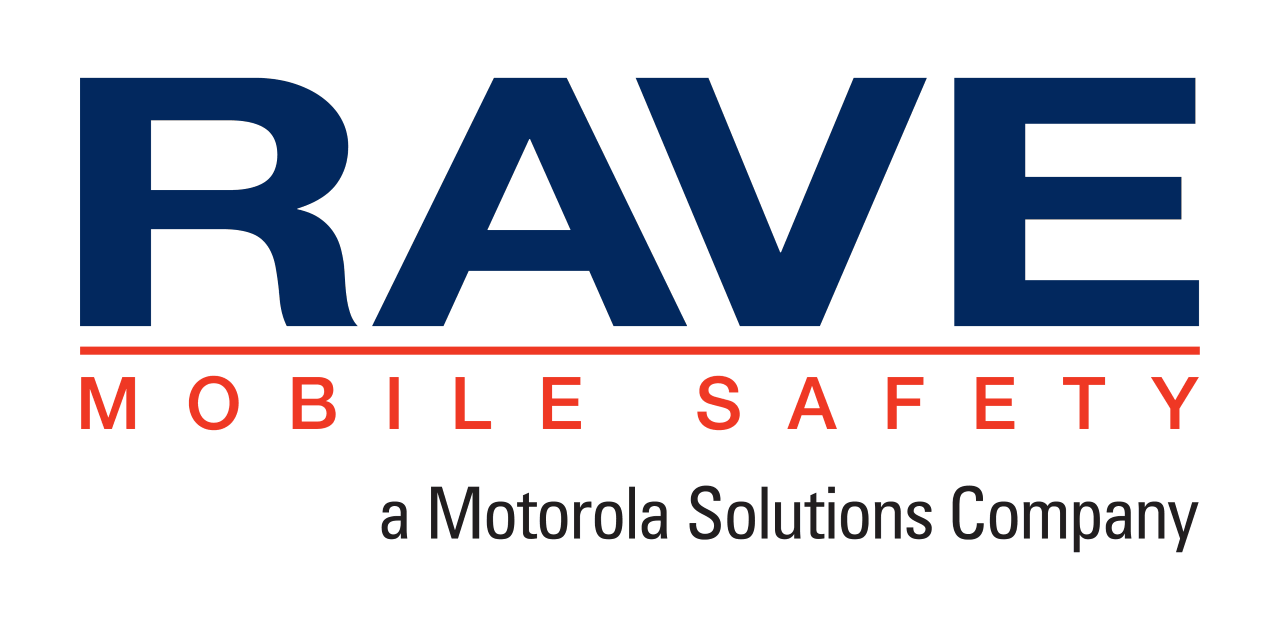Yes, most public safety software solutions are built to work across several devices and platforms, providing for seamless communication and collaboration. This includes desktop computers, laptops, tablets, and smartphones, as well as operating systems including Windows, Mac, iOS, and Android. This ensures that first responders and law enforcement personnel may receive crucial information and updates in real time, regardless of device or location.
List of Best Public Safety Software
AlertMedia, the smart SMS blast software that streamlines your customer communication process. With robust bulk SMS capabilities, generating productive leads is now hassle-free. Say farewell to time-consuming messaging and embrace smooth texting with...Read More AlertMedia
Dynamic Public Safety solution to meet all your operational requirements. Our cutting-edge law enforcement case management software offers exceptional support via email, chat, and client portal. Say farewell to the challenges of document management a...Read More Dynamic Public Safety
Omnigo is a law enforcement software that allows for efficient task scheduling, accurate timekeeping, and automatic report creation. This advanced platform is highly adaptable and prioritizes security to cater to the individual needs of law enforceme...Read More Omnigo
Rave Alert - the premier communication solution designed for schools and communities prioritizing safety. Utilizing a fast and dependable alert system, Rave Alert fosters a secure environment using easy-to-use technology that nurtures confidence. Be...Read More Rave Alert
Spillman Flex CAD, the top-notch computer-aided dispatch system that enables public safety agencies to efficiently communicate, reduce response times, and seamlessly integrate with other systems for effective incident management and resource allocati...Read More Spillman Flex CAD
CommandCentral is a software solution that integrates voice, video, and data for public safety agencies. Created to swiftly and efficiently handle emergency situations, this platform features an intuitive interface and real-time analytics for greater...Read More CommandCentral
Bridge4PS is a cloud-based solution for first responders. Developed by Mobility 4 Public Safety, this cutting-edge app enables secure and seamless communication and data-sharing within and across teams, departments, and jurisdictions. With nationwide...Read More Bridge4PS
Vannevar Decrypt is a solution for government agencies and security organizations seeking reliable foreign language text analysis. This advanced platform streamlines the acquisition of crucial data from challenging sources, providing swift and accura...Read More Vannevar Decrypt
Caliber CAD, the innovative software that is revolutionizing public safety. Designed with cutting-edge features and advanced solutions, Caliber CAD is transforming the operations of agencies and first responders. With unparalleled efficiency and comm...Read More Caliber CAD
QHSEalert - Safety Permit to Work, the efficient cloud-based solution for creating, reviewing, and approving safety permits. With its quick permit regeneration feature, valuable time is saved. Easily share permits through email, text, or WhatsApp and...Read More QHSEalert - Safety Permit to Work
API4AI NSFW, a image screening solution that effectively evaluates the suitability of content for public or workplace viewing. It accurately classifies images as SFW (safe for work) or NSFW (not safe for work) with a confidence score, ensuring a secu...Read More API4AI NSFW
10-8 Systems, a top-performing CAD and RMS software designed to cater to a diverse range of industries. From law enforcement and emergency medical services to private security and snow management, our all-inclusive solutions provide efficient and dep...Read More 10-8 Systems
Learn More About Public Safety Software
- What Is Public Safety Software?
- What Are The Recent Trends In Public Safety Software?
- Benefits Of Using Public Safety Software
- Important Factors To Consider While Purchasing Public Safety Software?
- What Are The Key Features To Look For In Public Safety Software?
- Why Do Businesses Need Public Safety Software?
- How Much Time Is Required To Implement Public Safety Software?
- What Is The Level Of Customization Available In Public Safety Software?
- Which Industries Can Benefit The Most From Public Safety Software?
- Conclusion
What Is Public Safety Software?
Public safety software is a robust technology that is specifically developed to assist law enforcement agencies, fire departments, and other emergency response groups in streamlining their operations and improving overall community safety. This software is critical in today's fast-paced and ever-changing world, where emergency responses must be prompt and effective.
At its core, public safety software is a comprehensive system that combines numerous software modules to establish a consolidated platform for managing vital activities and data. These modules may include capabilities such as dispatch and call taking, incident management, records management, mobile applications, and others. They collaborate seamlessly to offer agencies with all of the resources they require to properly manage and respond to emergencies.
One of the primary advantages of using public safety software is the capacity to facilitate real-time communication and coordination among all parties involved in an emergency response. This implies that dispatchers, first responders, and other organizations can exchange essential information and resources, resulting in faster and more efficient responses.
Furthermore, public safety software includes advanced capabilities like GIS integration, AVL tracking, and predictive analytics. These tools can give users with useful insights and data, allowing them to make informed decisions and manage resources more efficiently. When choosing public safety software, there are a few important considerations.
These include the software's compatibility with other systems, usability, dependability, and customer support. It is critical to select a sturdy and user-friendly system that can adapt to your agency's demands and develop with you as those needs change.
What Are The Recent Trends In Public Safety Software?
In recent years, there has been a significant increase in the use of technology in public safety, notably software. This program is meant to assist public safety agencies in managing and carrying out their obligations, which include emergency response, criminal prevention, and overall organization and communication.One of the most visible trends in public safety software is the proliferation of cloud-based options.
With improvements in cloud technology, public safety organizations can now access their data and software applications from any location and at any time. This has resulted in greater operational efficiency and flexibility, as well as better coordination among various authorities.Another advancement in public safety software is the integration of artificial intelligence (AI) and machine learning.
These technologies allow for the analysis of huge amounts of data, such as crime patterns and emergency call data, in order to detect potential threats and make informed decisions. This has been very useful in predicting and preventing crime, as well as maximizing emergency response.Additionally, there is a growing emphasis on interoperability in public safety software.
This refers to the ability of different systems and software to communicate and share data with each other. As the number of public safety groups that use technology expands, it is vital that their systems work together effortlessly.This trend has also resulted in the development of integrated software solutions capable of performing a variety of tasks, including dispatch, record management, and field reporting.
Mobile technology has also had a significant impact on public safety software. The use of smartphones and tablets by public safety officers has changed how they access and use information in the field.This has enabled real-time data sharing, improved communication among first responders, and decreased administrative procedures.Finally, there has been a push for more usable and intuitive user interfaces in public safety systems.
This means that people with varying levels of technological skill can easily browse and utilize the software. Furthermore, software vendors are offering more specialized and customizable options to satisfy the specific needs of diverse agencies.
Benefits Of Using Public Safety Software
Public safety software is a vital tool for any company or agency in charge of ensuring the public's safety and security. This sophisticated software includes a variety of features that expedite procedures, improve collaboration, and increase overall efficiency. With technological improvements, public safety software has evolved into a vital tool for any modern-day public safety company.
Let's look more closely at the advantages of employing public safety software and why it should be a top priority for any customer.
1. Improved Communication And Collaboration: One of the most major advantages of employing public safety software is the increased communication and collaboration among various departments and organizations. With capabilities such as real-time messaging, shared databases, and task management, public safety software allows teams to collaborate effortlessly and efficiently. This leads to faster reaction times and better coordination, resulting in improved public safety services.
2. Streamlined Processes And Operations: Public safety software includes a number of capabilities that can help automate and streamline a variety of processes and operations. From dispatching and scheduling to record-keeping and report production, this program reduces the need for manual activities, minimizing the possibility of error and saving time. Organizations can work more efficiently with reduced processes, which leads to better service delivery results.
3. Improved Data Management And Analysis: Public safety agencies collect massive amounts of data, and efficient management is critical. Advanced data management and analysis technologies are available in public safety software, allowing for the extraction of valuable insights from massive amounts of data. This can help to make more informed decisions and improve overall performance.
4. Increased Mobility And Remote Access: Public safety software enables teams to stay connected and access critical information while on the road. Most software includes mobile applications, which allow responders to access data and complete tasks using their mobile devices. This improves efficiency, response times, and guarantees that situations are resolved more quickly and effectively.
5. Improved Safety And Security: The most important advantage of employing public safety software is the increased safety and security it delivers to the public. Public safety organizations may respond to catastrophes swiftly and efficiently by implementing efficient communication, streamlined operations, and enhanced data analysis. This increases overall public safety and instills confidence and trust in the community.
Important Factors To Consider While Purchasing Public Safety Software?
When it comes to buying public safety software, there are several crucial considerations to consider. This software is critical in assisting law enforcement agencies, emergency response teams, and other public safety groups to do their tasks successfully and efficiently. As a result, it is critical to make an informed selection when selecting the finest software for your specific requirements.
The following are some crucial elements to consider when looking for public safety software:
1. User-Friendly Interface: The first consideration should be the software's usability. It should have a simple and intuitive interface that both new and experienced users can use. This ensures that your team can rapidly and easily embrace the software, resulting in a more seamless transfer and higher productivity.
2. Integration Capabilities: Public safety software should not be used as a standalone system. It should be able to integrate with your organization's other systems and databases. This will allow for seamless communication and data exchange between departments, increasing efficiency and collaboration.
3. Customization Options: Each public safety organization has distinct requirements and workflows. As a result, it is critical to find software that can be tailored to your individual needs. This ensures that the software is consistent with your operations and can adapt to new needs in the future.
4. Technical Support And Training: When selecting public safety software, it is critical to assess the degree of technical support and training offered by the vendor. Make sure they provide comprehensive training for your team to ensure correct software usage and knowledge. Furthermore, trustworthy technical support is required in the event of any problems or inquiries that develop during use.
5. Security Features: Public safety agencies deal with sensitive and confidential information on a daily basis. To protect this information, pick software with strong security features. To avoid unwanted access or data breaches, ensure that the program has encryption, user authentication, and frequent security updates.
6. Scalability: As your firm develops and evolves, your software requirements may alter. As a result, it is critical to select software that is scalable and can handle these changes without affecting your operations. This will save you time and money by eliminating the need to switch software frequently.
7. User Feedback And Recommendations: Before making a final selection, it is a good idea to examine evaluations and advice from other public safety organizations who have used the software. This can help you understand the software's performance, user experience, and overall satisfaction level.
What Are The Key Features To Look For In Public Safety Software?
When choosing public safety software, purchasers should examine a few essential aspects to help them make an informed decision.
These characteristics not only assure effective and efficient operation, but also contribute to improved overall safety and security measures.
1. Real-time Incident Management: The software must be able to manage real-time situations, allowing dispatchers to respond swiftly and communicate with all departments involved. This helps to reduce reaction time and improve overall incident management.
2. Multi-Agency Collaboration: Public safety software should enable collaboration among different agencies, such as police, fire, and EMS departments. This function enables seamless communication and collaboration in emergency scenarios.
3. Mobile Access: In today's fast-paced world, using mobile-friendly software is essential. Look for software that includes a mobile app or can be accessed via a web browser. This provides for simple access and updates while on the go, ensuring a quick response to issues.
4. Mapping And GPS Integration: A decent public safety software should include capabilities like mapping and GPS integration, which allow for precise location tracking and mapping of emergency situations. This is especially beneficial for dispatchers and responders in determining the shortest path to the incident.
5. Personalized Reporting: The ability to create personalized reports can provide useful insights and data for resource allocation and future planning. Look for software that allows you to create unique report templates and export data in a variety of formats.
6. Integrated Records Management: Comprehensive public safety software should have integrated records management, which allows for easy storing and retrieval of data about events, personnel, and equipment. This helps to keep accurate records and streamlines the whole procedure.
7. Automated Data Entry: Manually inputting data is time-consuming and prone to error. Choose software that includes capabilities like automatic data entry, which can save time and lessen the likelihood of human errors.
8. Training And Support: Finally, verify sure the software provider provides comprehensive training and continuous support to ensure a seamless implementation and operation. Look for software with easy-to-use interfaces and readily available help channels to address any issues that may emerge.
Why Do Businesses Need Public Safety Software?
Public safety software is a crucial tool for all businesses, regardless of size or sector. This sophisticated program includes a variety of features and benefits that can help businesses enhance their safety practices and emergency response times.
Here are the main reasons firms need public safety software:
1. Streamline Emergency Response: Public safety software leverages cutting-edge technology to streamline emergency response processes. This includes alerting emergency services, tracking response times, and giving real-time updates to all involved parties. This allows for a faster and more efficient emergency response, reducing the danger of injury and damage.
2. Improved Communication: With public safety software, businesses may rapidly interact with emergency services, other businesses, and the general public during an incident. This enhances communication and coordination, resulting in a more efficient reaction and less confusion during critical moments. It also enables organizations to deliver critical warnings and notifications to their staff and consumers, keeping them informed and safe.
3. Centralized Database: One of the key advantages of public safety software is the ability to store and retrieve essential information in a centralized database. This provides emergency contacts, building layouts, hazardous material information, and other important details for emergency responders. This decreases response times while also providing responders with the knowledge they need to successfully handle the situation.
4. Risk Management: Public safety software enables firms to identify possible risks and hazards in their operations and take proactive steps to mitigate them. The software provides risk assessment and management tools that assist firms in identifying potential risks and vulnerabilities and taking remedial actions to avert them.
5. Compliance With Rules: Many industries, including healthcare and transportation, have stringent safety and emergency preparedness rules. Public safety software assists firms in complying with these standards by offering tools for emergency planning, reporting, and recordkeeping. This decreases the likelihood of penalties and fines for noncompliance.
How Much Time Is Required To Implement Public Safety Software?
The amount of time necessary to develop public safety software varies based on a number of factors, including the specific software being implemented, the size and complexity of the organization, and the availability of resources. On average, the implementation process takes 4 to 6 months, although in rare circumstances it might take up to a year.
This includes time for planning, training, and carrying out the actual implementation procedure. The initial phase in the process is typically a needs assessment and gap analysis to discover the organization's unique requirements and identify potential areas for improvement. This can take anywhere from a few weeks to many months, depending on the scope of the analysis.
After selecting the software, the vendor will normally provide training and support to the organization's workers, which can take anything from a few weeks to a month. During this period, it is critical that employees properly understand the software's capabilities and functionalities to ensure a smooth transition. The actual installation process will then commence, with the software being configured to match the organization's specific needs and integrated with current systems.
This can take anywhere from a few weeks to many months, depending on the complexity of the program and the organization's infrastructure. Following the implementation, there will be a testing and validation phase to confirm that the software is working properly and meeting the organization's requirements. This could take a few weeks or a month.
It is critical to understand that the implementation process is not a one-time event; it is a continual activity that necessitates regular upgrades, maintenance, and training. As a result, it is critical to have a specialized team in place to administer the software and assure its continued success.
What Is The Level Of Customization Available In Public Safety Software?
Public safety software is an essential tool for managing emergency services, law enforcement, and other key public safety functions. As a result, purchasers must understand the level of customisation possible in these software solutions to guarantee they match their specific demands and expectations. The level of customization available with public safety software varies substantially depending on the vendor and the product being purchased.
Most public safety software systems include a high level of customisation, allowing customers to adjust the software to their own workflows and processes. At the very least, most public safety software will allow for modification of user roles and permissions, allowing administrators to manage who has access to specific functions and data inside the platform.
This level of customization is critical for guaranteeing data security and smooth operations within the organization. Furthermore, many public safety software solutions have customized forms and templates, allowing users to design and create their own incident reports, citations, and other required paperwork. This level of customisation is especially valuable for agencies that have unique reporting requirements or want to adjust the software to their specific procedures.
Furthermore, public safety software frequently provides for customization of data fields, allowing agencies to track and analyze data that is most relevant to their specific operations. This customisation can also be applied to reporting and analytics tools, allowing agencies to develop reports and insights that are specific to their needs and goals.
Some public safety software solutions allow for integration with third-party systems and tools like as CAD (Computer-Aided Dispatch) systems, GPS tracking, and body-worn cameras. This amount of customisation can significantly expand the software's capabilities, resulting in a more comprehensive and efficient system for managing public safety activities.
Overall, the level of customization available in public safety software is critical for ensuring that the software meets the specific demands of each agency. Before making a purchase decision, buyers should carefully analyze their individual requirements as well as the level of customization provided by various software vendors. This ensures that they invest in a solution that is personalized to their needs and includes the tools required for effective and efficient public safety management.
Which Industries Can Benefit The Most From Public Safety Software?
Public safety software is an essential tool for businesses that value the safety and well-being of their employees, customers, and the general public. The advantages of using such software are numerous, as it gives a centralized and effective approach to manage emergency situations, streamline communication and reaction, and, ultimately, prevent and reduce potential hazards.
The healthcare industry can benefit immensely from public safety software. Natural disasters, medical emergencies, and security concerns are all common scenarios that hospitals, clinics, and other medical facilities must deal with. Public safety software can help detect the location of these accidents immediately, call the necessary emergency services, and communicate with staff efficiently to protect the safety of patients, employees, and visitors.
The public transportation business can also profit from public safety software. Whether it's a bus, train, or subway system, passenger safety is first priority. Public safety software can assist transportation businesses improve their security and response capabilities by providing real-time tracking, mobile notifications, and incident management features.
In the event of an accident or emergency, the software can rapidly notify authorities and offer critical information to aid in rapid and successful crisis management. Public safety software is extremely important for educational institutions, especially given recent school shootings and other safety concerns. Schools can better safeguard their kids and staff in the event of an emergency and enhance their overall reaction to critical circumstances on campus by implementing features such as emergency notification systems, virtual incident mapping, and communication platforms.
Government agencies, corporate offices, and entertainment venues are among the industries that can profit from public safety software. Finally, any firm that values the safety and security of its stakeholders can profit from using public safety software. Businesses who invest in such technology can not only avoid potential risks and dangers, but also demonstrate their dedication to the safety of their staff and consumers.
Conclusion
Conclusion: Investing in public safety software is an important decision for any organization or agency that values community safety and well-being. With technological improvements, it has become critical to have a reliable and comprehensive software solution in place to streamline and improve crucial public safety procedures.
Before making a purchase, you should analyze your organization's specific objectives and requirements, as well as conduct extensive research and comparisons of other software solutions. A rigorous evaluation approach, as described in this buyer's guide, will guarantee that you select the best solution for your organization's specific needs.
From enhancing emergency response times and communication to managing resources and keeping track of critical data, public safety software has numerous advantages that can dramatically improve the overall efficiency and effectiveness of public safety operations. We hope you found this buyer's guide useful in guiding your decision-making process. When selecting public safety software, remember to prioritize security, support, and scalability, and consider working with a credible and experienced software vendor for the best outcomes.
Public Safety Software FAQ's
Can Public Safety Software Be Accessed Across Multiple Devices And Platforms?
Is Public Safety Software Future-Proof And Adaptable To Emerging Technologies Like AI, Blockchain Or IoT?
Yes, public safety software is constantly evolving and adapting to new technologies like AI, blockchain, and IoT. These revolutionary technologies can assist public safety organizations improve their efficiency, accuracy, and response times. The program is designed with future-proof features, allowing it to easily link to new technologies as they emerge. As technology progresses, Public Safety Software will evolve to meet the changing requirements of public safety agencies.
Is There A Free Trial Offered To Assess Public Safety Software Before Committing?
Yes, many public safety software providers offer a free trial to allow customers to assess their products before making a purchase decision. This allows businesses to test the features and evaluate their usability prior to making a purchase. Some providers may offer free demos and consultations to address specific needs and difficulties. It is vital to take advantage of these opportunities to ensure that the software meets your agency's requirements and enhances public safety operations.
Does Public Safety Software Offer Data Security Features And Meet Regulatory Compliance Standards?
Yes, public safety software has data security safeguards to secure sensitive information. This incorporates encryption, user authentication, and scheduled data backups. Furthermore, most public safety software follows regulatory compliance requirements like HIPAA and CJIS, which need stringent data security protections. This guarantees that agencies can rely on the program to manage sensitive data in compliance with regulatory obligations.
Can Public Safety Software Integrate Seamlessly With Existing Tools And Platforms?
Yes, public safety software can easily interface with existing tools and platforms. Many modern public safety software solutions are designed to be easily connected with other systems like CAD, incident reporting, and RMS.
This results in a more effective and simplified workflow, minimizing the need for manual data entry while boosting communication and collaboration among departments and agencies. Integration can also increase data accuracy and provide a full view of all important information, allowing for more informed decision making.














